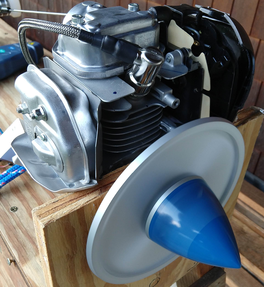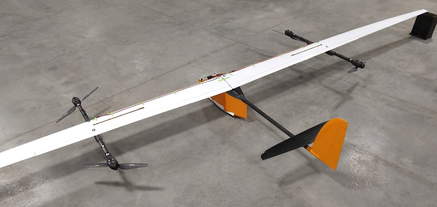A good friend of mine designed the on-board electrical systems and is now performing breadboard testing of the components.
Although the total power draw of the vehicle avionics and ignition system is only about 10W, during a long flight this would require an unacceptable battery mass fraction without an on-board power generation system.
The alternator used only weighs ounces, but can produce 120V AC at high engine RPM. This power is then rectified and regulated down to 12V DC. Some of the power is regulated further to ~5V DC to power the autopilot and servo rail. The system has been tested at 6,000 engine RPM and 30+ Watts power output and is performing well so far.
In the event of alternator/regulator failure, the autopilot will switch over to the VTOL lift motor batteries and an alarm will sound. The lift batteries are large and can power the systems for a very long time.
Now the fun part: packaging!
Although the total power draw of the vehicle avionics and ignition system is only about 10W, during a long flight this would require an unacceptable battery mass fraction without an on-board power generation system.
The alternator used only weighs ounces, but can produce 120V AC at high engine RPM. This power is then rectified and regulated down to 12V DC. Some of the power is regulated further to ~5V DC to power the autopilot and servo rail. The system has been tested at 6,000 engine RPM and 30+ Watts power output and is performing well so far.
In the event of alternator/regulator failure, the autopilot will switch over to the VTOL lift motor batteries and an alarm will sound. The lift batteries are large and can power the systems for a very long time.
Now the fun part: packaging!


 RSS Feed
RSS Feed
